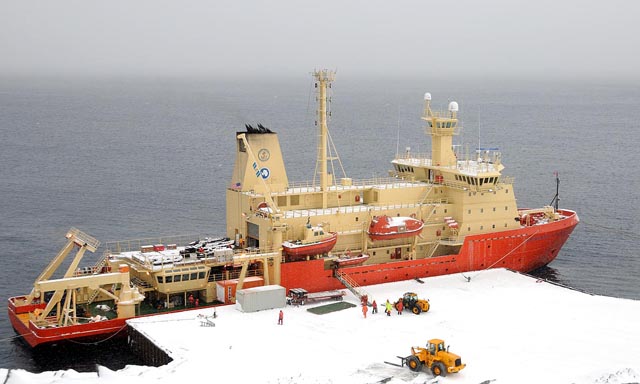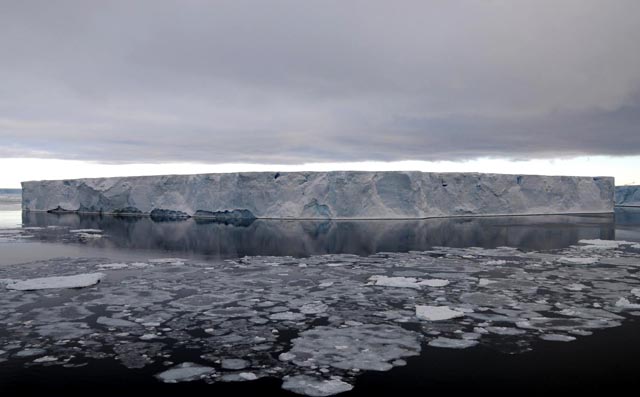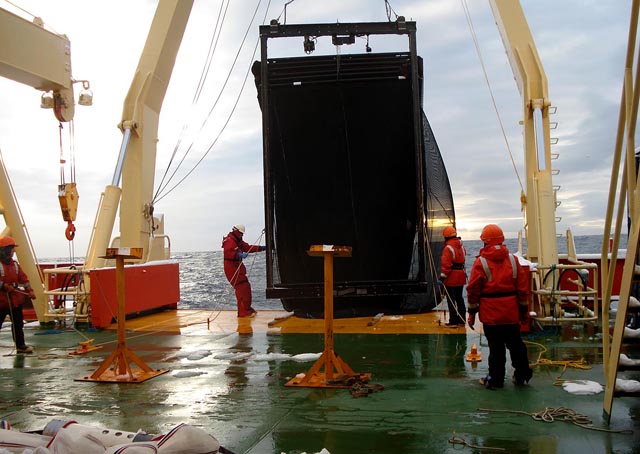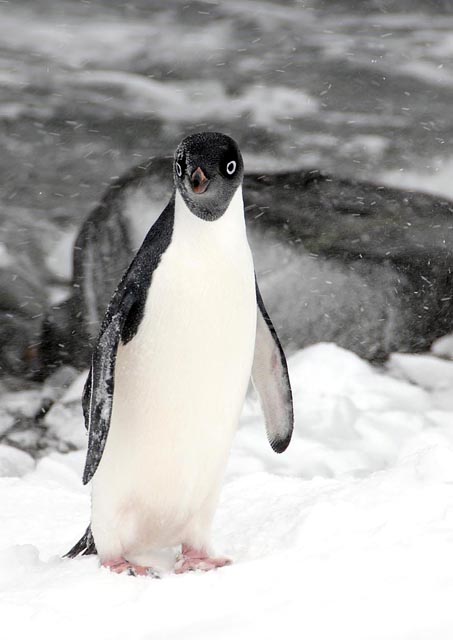Fishy businessClimate change may be to blame for disappearance of Antarctic silverfishPosted July 9, 2010 What’s missing? A sardine-sized fish called Pleuragramma antarcticum, more commonly referred to as the Antarctic silverfish. Once upon a time, as the story goes, Antarctic silverfish swam by the thousands in places like Arthur Harbor at the northern end of the peninsula. “That doesn’t happen anymore,” said Joseph Torres It’s been about 15 years since any significant numbers of silverfish were found in the Adélie diet in the area around Palmer Station on Arthur Harbor, according to Bill Fraser, whose work in the region dates back to the 1970s and is part of the Palmer Long Term Ecological Research The scientists traveled aboard the research vessel Nathaniel B. Palmer “What we wanted to do was contrast the different regions in terms of how many silverfish they had and what the diet of the penguins there was like,” Torres explained. “We were curious if the penguin diets reflected what the community was like out there.” Expected resultsThe scientists used two methods to search for the disappearing silverfish. They towed nets from the ship along the relatively shallow waters of the continental shelf near where penguin colonies forage for food. And Fraser’s seabird researchers visited key penguin colonies on various islands. They examined the stomach contents of nearly 60 birds, as well as attached satellite tags on some penguins to monitor their foraging habits.They found silverfish where they expected to find them — in the south, where sea ice and a colder climate persist. They didn’t find them where they expected not to find them — around Palmer Station farther to the north, where ambient winter temperatures are up about 6.5 degrees Celsius since the 1950s and sea ice is a fading memory. Like other parts of the polar food web — such as Adélie penguins and shrimp-like krill — the silverfish rely on sea ice for parts of their lifecycle. For example, the sea ice offers cover when the eggs hatch in November, Torres noted. Without it, he added, “the larvae are exposed to predation in the open water.” Based on the preliminary results of the net tows and diet samples, Fraser said, “I think we can pretty substantially confirm that the silverfish have, in fact, disappeared from a very specific region of the Antarctic Peninsula, which happens to be the region that has experienced the most rapid winter sea ice loss over the last three decades.” On the other hand, silverfish still account for a substantial part of the the penguin diet for birds at Charcot and Avian Island to the south. While still awaiting more definitive analysis, Fraser said he estimated that Pleuragramma made up about half of the meals for birds on Avian and upwards of 80 percent for the most southerly Adélies at Charcot. OutclassedBut the story is more complicated — and possibly grimmer — than the scientists first suspected. While they found Antarctic silverfish in the south, they saw fish dominated by only one age class, a cohort they estimate to be about 9 or 10 years old. The absence of a younger age class, a new generation, is worrisome, according to Torres.“It tells me that the population isn’t getting any new recruits,” he said. “What we’re looking at is a population that is not a healthy one.” In fact, the only bright spot was around Joinville Island in the extreme north, where currents from the Weddell Sea bring in new silverfish from the still healthy populations on the eastern side of the peninsula. But thickening sea ice and blustery weather that dropped the wind chill to minus 50 degrees centigrade made for challenging working conditions there. “The ocean was freezing too fast. We were really limited in terms of what we could do and where we could go,” Fraser said. |
Otoliths
The researchers are keenly interested in figuring out where the Charcot and Avian silverfish populations come from. That job largely falls to Julian Ashford
Ashford employs a technique called Inductively Coupled Plasma Mass Spectrometry, or ICPMS, that can not only tell him about where the fish were spawned, but what environmental conditions existed from year-to-year during the animal’s lifetime. All he and his team need for the analysis is an otolith — a small ear bone.

Photo Credit: Penguinscience.com
Fish otoliths. The small, rounded ones are from Antarctic silverfish.
Trace elements found in the calcium matrix, on the other hand, can offer clues to the kind of conditions that existed throughout the critter’s lifetime. For example, the chemical element strontium can indicate water temperature.
“What you’re getting is a kind of environmental record that’s related to chronology, and the fish are constantly putting that down throughout their life history,” Ashford said.

Photo Credit: Joseph Torres
The research vessel Nathaniel B. Palmer tied up at the pier of Rothera Research Station off the Antarctic Peninsula.
“They’ll be recording water peculiar to their spawning area,” Ashford said. “It’s terribly important to know what proportion of fish you have in a particular area is self-recruiting from a local population and how many are migrating in from other populations.”
Common source
Ashford said he suspects the Charcot and Marguerite populations share a common source based on the demographics. The chemistry work from the otoliths will confirm those suspicions.Previous research has shown that krill are also dominated by certain age classes, likely related to environmental cycles, particularly sea ice.
“It may be that similar events are driving the Pleuragramma,” Ashford noted.
Another team of collaborators from Italy collected tissue samples at the same time Ashford extracted his otolith specimens. The Italians will analyze the silverfish’s genetic characteristics and compare them to other silverfish from around the Southern Ocean, according to Torres.
“We have two lines of evidence being worked up now to see where they came from and who they are most closely related to. That’s a pretty nifty thing,” he said.
The results from the cruise will establish an important baseline for researchers to track the future progress of the Antarctic silverfish along the Antarctic Peninsula, Torres added.
“When this fish is missing from the smorgasbord for penguins and other seabirds, [the predators] tend to decline in numbers,” he said. “The silverfish is the only Antarctic coastal pelagic fish that is accessible to all predators. It is extremely important.”
NSF-funded research in this story: Joseph Torres, University of South Florida, Award No. 0741348
Source
























No comments:
Post a Comment